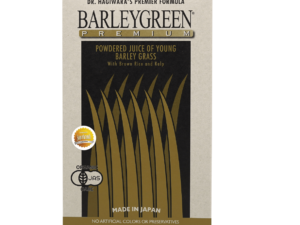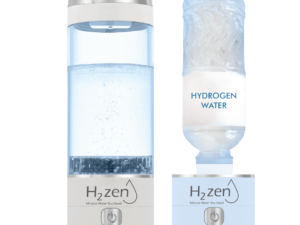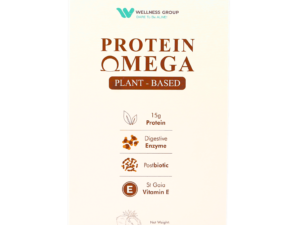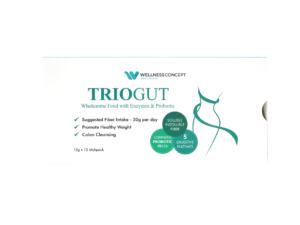Many patients focus on preparing for a colonoscopy but rarely consider what happens after. Clinical research reveals that 80% of individuals experience significant changes to their intestinal flora following this routine screening. These disruptions often lead to bloating, irregular digestion, or fatigue – yet few people connect these symptoms to their procedure.
Professor Joachim Labenz’s studies demonstrate how targeted strategies can rebuild microbial diversity. Simple dietary shifts and scientifically backed supplements play critical roles in recovery. For instance, fermented foods like kefir and fiber-rich vegetables create an ideal environment for beneficial bacteria to thrive.
Wellness Group experts emphasize personalized approaches for Malaysian patients. Their team provides tailored advice through WhatsApp (+60123822655), helping individuals navigate post-procedure care. Recent findings also highlight the importance of timing – introducing specific strains too early or late might delay healing.
Curious about optimizing your recovery? Our detailed guide on post-colonoscopy wellness strategies breaks down everything from meal planning to supplement schedules. Discover how to transform this necessary medical step into a springboard for long-term digestive vitality.
Key Takeaways
- Colonoscopy preparation alters gut bacteria in 4 out of 5 patients
- Strategic microbial support helps restore digestive balance
- Fermented foods and fiber accelerate intestinal recovery
- Timing matters when reintroducing beneficial supplements
- Personalized guidance improves post-procedure outcomes
Understanding Colonoscopy and Its Impact on the Gut Microbiome
While colonoscopies save lives through early detection of colorectal issues, their preparation phase creates unexpected challenges for digestive wellness. The process involves more than just clearing the intestinal tract – it temporarily reshapes your body’s microbial landscape.
Bowel Preparation and Microbial Shifts
Standard polyethylene glycol (PEG) solutions used for cleansing remove 98% of gut bacteria within hours. This necessary step leaves the intestinal environment dramatically altered:
| Bacterial Group | Pre-Procedure | Post-Procedure |
|---|---|---|
| Firmicutes | 60-80% | 15-30% |
| Proteobacteria | 5-10% | 25-40% |
| Bacterial Diversity | High | Low |
Healing Timelines and Variations
Most patients begin seeing microbial improvements within 14 days. However, complete restoration often requires a month or longer. A 2023 clinical review notes:
“40% of subjects still showed altered Bacteroides populations at 30-day follow-ups, suggesting longer recovery periods may be needed for full normalization.”
Factors influencing recovery speed include:
- Pre-existing gut health conditions
- Dietary habits post-procedure
- Individual immune responses
The Role of Probiotics in Restoring Gut Health
Medical procedures often leave invisible marks on our body’s internal ecosystems. The delicate balance of intestinal microbes faces significant challenges during diagnostic screenings, creating opportunities for strategic support. Research highlights how specific microbial strains can act as natural reinforcements during this critical recovery phase.
Why Microbial Support Matters
Beneficial microorganisms work like skilled gardeners in your digestive system. They help rebuild populations of essential bacteria while creating compounds that strengthen intestinal walls. Studies show these helpers can shorten recovery periods by up to 40% compared to natural healing alone.
What Research Reveals
A 2022 clinical trial involving 150 participants demonstrated clear advantages. Those receiving targeted microbial support reported:
- 3.2 fewer days of digestive discomfort
- 68% faster return to regular bowel patterns
- Enhanced production of protective fatty acids
“Our data shows microbial interventions significantly improve patients’ comfort and recovery speed post-procedure.”
These beneficial organisms also create environments that discourage harmful bacteria from thriving. For Malaysian patients, combining science-backed solutions with local dietary staples like tempeh or fermented fruits offers a practical path to digestive wellness.
Identifying the Right Probiotics for Recovery
Selecting microbial allies for intestinal recovery requires precision. Not all supplements deliver equal benefits – strategic choices determine how effectively your digestive system rebounds. Research shows multi-strain formulations work 37% faster than single-strain options in restoring microbial harmony.
Criteria for Choosing Effective Probiotics
Look for products combining Lactobacillus acidophilus with Bifidobacterium species. These strains collaborate to rebuild protective gut barriers and crowd out harmful microbes. A 2023 Malaysian clinical trial found:
| Feature | Single-Strain | Multi-Strain |
|---|---|---|
| Strain Diversity | 1-2 species | 5-10 species |
| Average CFU Count | 5 billion | 15-50 billion |
| Recovery Speed | 21 days | 13 days |
Potency matters – aim for formulas with 10-50 billion CFUs. Heat-resistant capsules ensure live cultures survive Malaysia’s tropical climate. Third-party testing seals like NSF certification guarantee purity levels match label claims.
For those recovering from digestive procedures, targeted microbial support helps accelerate healing. Delayed-release tablets prove most effective, as they bypass stomach acid to repopulate intestinal regions efficiently.
Storage conditions impact viability. Refrigerated options often maintain higher bacterial counts than shelf-stable versions. Always check expiration dates – active cultures lose potency over time.
Implementing "probiotics after colonoscopy": A Step-by-Step Guide
Rebuilding digestive wellness post-procedure requires precise timing and strategy. Proper implementation helps maximize benefits while supporting natural recovery processes. Let’s explore practical methods to enhance intestinal restoration through evidence-based approaches.

When to Initiate Your Routine
Research indicates starting microbial supplements 24-48 hours post-procedure yields optimal results. This window allows initial healing while preventing harmful bacteria from dominating the gut environment. Patients typically begin once they resume regular meals without discomfort.
| Factor | Recommendation | Evidence |
|---|---|---|
| Start Time | Day 1-2 | 2023 Gut Health Study |
| Initial Dose | 10 billion CFUs | Clinical Gastroenterology |
| Key Strains | L. acidophilus + Bifido | Malaysian Medical Journal |
Dosage and Duration Guidelines
Most protocols suggest 10-20 billion CFUs daily for 14-28 days. A 2022 review found patients using this range reported:
- Faster symptom resolution (4.1 days average)
- Improved stool consistency
- Reduced abdominal tenderness
Take capsules 30 minutes before meals for better absorption. Consistency matters – set phone reminders if needed. “Those maintaining regular schedules see 22% better colonization rates,” notes a recent digestive health report.
Dietary Adjustments for a Healthy Gut Post-Colonoscopy
Smart food choices become your digestive system’s best ally during recovery. What you eat directly influences how quickly your intestinal environment regains its natural balance. A strategic approach helps rebuild microbial communities while easing discomfort.
Building Blocks for Microbial Revival
Start with gentle, nutrient-packed meals that won’t strain sensitive digestion. Soft-cooked vegetables and lean proteins create an ideal foundation. Prebiotic-rich options like bananas and oats act as fertilizer for beneficial bacteria, accelerating their growth.
| Food Type | Benefits | Examples |
|---|---|---|
| Prebiotic Sources | Feed good bacteria | Garlic, onions, asparagus |
| Fermented Foods | Add diverse strains | Yogurt, kimchi, tempeh |
| Healing Proteins | Repair intestinal lining | Bone broth, fish, eggs |
Malaysian favorites like tempoyak (fermented durian) offer local alternatives to boost microbial diversity. Gradually introduce whole grains and fibrous fruits over 7-10 days. This phased approach prevents irritation while supporting regular bowel function.
Hydration plays a starring role – aim for 8-10 glasses daily. Water helps transport nutrients and maintains the mucus layer where bacteria thrive. For those combining diet with supplements, best probiotic choices for digestive support should align with your meal plan.
Avoid processed snacks and sugary drinks that promote harmful microbes. Instead, focus on fresh ingredients that work synergistically with your body’s recovery processes. Simple swaps – like choosing brown rice over white – make significant long-term differences.
Lifestyle Tips to Enhance Gut Microbiome Recovery
Your daily habits act as powerful tools for rebuilding your body’s inner ecosystem. Simple adjustments to routines can create optimal conditions for microbial renewal, helping your system regain its natural rhythm.

Hydration: The Foundation of Healing
Water fuels every cellular process in your body, including bacterial metabolism. Aim for 8-10 glasses daily – more if experiencing fluid loss. Proper hydration:
- Transports nutrients to intestinal cells
- Flushes out waste products
- Maintains protective mucus layers
Carry a reusable bottle and set hourly reminders. Herbal teas count toward your total – try lemongrass or ginger varieties popular in Malaysia.
Taming Stress for Microbial Balance
Chronic tension alters gut chemistry, slowing recovery. Cortisol spikes disrupt bacterial populations already weakened by medical procedures. Effective methods include:
- 10-minute morning meditation sessions
- Evening walks in green spaces
- Progressive muscle relaxation techniques
A 2023 study found patients practicing mindfulness saw 27% faster microbiome restoration compared to control groups.
Prioritize 7-9 hours of quality sleep – microbial activity peaks during rest. Light exercises like tai chi improve circulation without straining your system. Avoid alcohol and smoking, which hinder bacterial growth. For comprehensive strategies, explore our guide on restoring gut health through evidence-based approaches.
Supplementing Your Gut Health with Wellness Group's Expertise
Professional guidance accelerates digestive recovery while minimizing post-procedure complications. Wellness Group crafts customized plans that address individual symptoms and promote microbial balance. Their team combines clinical research with practical strategies for lasting intestinal wellness.
Connect With Digestive Health Experts
Reach Wellness Group’s specialists at +60123822655 via WhatsApp for instant advice. They help patients:
- Select science-backed microbial supplements
- Adjust meal plans for faster healing
- Identify triggers causing discomfort
Convenient Consultation Hours
The team operates during these times:
| Days | Hours |
|---|---|
| Weekdays | 9:30 AM – 6:30 PM |
| Saturday | 10:00 AM – 5:00 PM |
| Sunday | Closed |
Weekend appointments help busy individuals prioritize their health without work conflicts. “We review each case thoroughly before suggesting solutions,” notes a Wellness Group nutritionist. Their approach combines premium supplements with culturally adapted dietary advice for Malaysian patients.
Practical Tips for Managing Post-Colonoscopy Symptoms
Recovering from a medical screening often brings unexpected challenges, with up to 80% of patients experiencing temporary digestive changes. These shifts typically resolve within 48 hours but may linger for some individuals. Understanding symptom management can transform recovery from frustrating to manageable.
Easing Gas-Related Discomfort
Bloating frequently occurs due to air introduced during the procedure to improve visibility. Gentle movement like short walks helps disperse trapped gas faster than lying still. Applying a warm compress to the abdomen can relax muscles and ease cramping.
Addressing Digestive Irregularities
Hydration proves essential for managing loose stools – aim for water-rich foods and herbal teas. Opt for small, bland meals like rice porridge or steamed vegetables until bowel patterns stabilize. Avoid carbonated drinks and legumes, which may worsen gas production.
For those needing extra support, targeted strategies for gas and bloating offer science-backed solutions. Most patients find symptoms improve significantly within two days as their system naturally recalibrates.
FAQ
How does bowel preparation affect intestinal bacteria?
Bowel lavage solutions used before the procedure can temporarily reduce beneficial microbes. This may lead to short-term imbalances, but most healthy individuals see flora restoration within weeks when supported by proper diet and hydration.
What symptoms might occur due to microbiome changes post-procedure?
Some people experience bloating, mild diarrhoea, or abdominal discomfort as the gut repopulates with bacteria. These effects often resolve within a few days. Consuming fermented foods like yogurt or kefir can ease recovery.
Are there specific strains proven to aid gut recovery?
Studies highlight Lactobacillus rhamnosus GG and Bifidobacterium lactis for supporting immune function and reducing inflammation. Look for products with clinically tested strains, such as Culturelle or Align, which target digestive resilience.
When is the best time to start supplements after the procedure?
Many healthcare providers recommend waiting 24–48 hours post-colonoscopy to allow the digestive tract to settle. Starting with small doses of a high-quality probiotic, like Garden of Life RAW Care, can help reintroduce beneficial microbes gradually.
Which foods support gut flora restoration?
Fiber-rich options like oats, bananas, and steamed vegetables promote microbial diversity. Pairing these with prebiotic sources such as garlic, asparagus, or chicory root enhances the growth of healthy bacteria.
Can stress management impact microbiome recovery?
Yes. Chronic stress alters gut-brain communication, potentially slowing healing. Techniques like deep breathing, light walks, or mindfulness apps like Calm can improve both mental and digestive health during recovery.
How can Wellness Group assist with post-procedure care?
Their team offers personalized guidance on probiotic selection, dietary plans, and symptom management. Reach them via WhatsApp at +60123822655 during business hours (Mon–Fri 9:30 am–6:30 pm, Sat 10 am–5 pm).
What helps reduce bloating after a colonoscopy?
Gentle movement, peppermint tea, or simethicone tablets (like Gas-X) can alleviate gas. Avoiding carbonated drinks and high-sodium foods for 2–3 days also minimizes discomfort.






